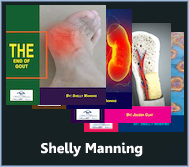How do you check if you have TMJ?
If you suspect you may have temporomandibular joint disorder (TMD) or temporomandibular joint (TMJ) dysfunction, it’s essential to seek evaluation and diagnosis from a healthcare provider, typically a dentist or oral surgeon, who specializes in TMJ disorders. A comprehensive assessment by a healthcare professional can help determine the underlying cause of your symptoms and guide appropriate treatment. Here are some steps typically involved in checking for TMJ:
- Medical History: Your healthcare provider will begin by taking a detailed medical history, including asking about your symptoms, any previous jaw injuries or trauma, dental history, and factors that may exacerbate or alleviate your symptoms (such as stress or teeth grinding).
- Physical Examination: Your healthcare provider will conduct a physical examination, which may include palpation of the TMJ and surrounding structures to assess for tenderness, swelling, or abnormalities. They may also evaluate your jaw movement, muscle function, and bite alignment.
- Diagnostic Tests: Depending on your symptoms and clinical findings, your healthcare provider may recommend diagnostic tests to further evaluate the TMJ. This may include X-rays, panoramic X-rays, lateral jaw X-rays, cone beam computed tomography (CBCT), magnetic resonance imaging (MRI), or computed tomography (CT) scans to assess the TMJ anatomy, alignment, and any underlying structural abnormalities.
- Assessment of Symptoms: Your healthcare provider will inquire about specific symptoms associated with TMJ disorders, such as jaw pain or tenderness, clicking or popping sounds during jaw movement, limited jaw movement or locking, muscle stiffness or fatigue in the jaw or face, headaches, earaches, and difficulty chewing or speaking.
- Evaluation of Jaw Function: Your healthcare provider may assess your jaw function by asking you to perform various jaw movements, such as opening and closing your mouth, moving your jaw from side to side, and protruding or retracting your jaw. They may also evaluate your bite alignment and occlusion (how your teeth fit together).
- Collaboration with Specialists: In some cases, your healthcare provider may collaborate with other healthcare specialists, such as maxillofacial radiologists or physical therapists, to further evaluate your TMJ and develop a comprehensive treatment plan tailored to your individual needs.
It’s important to communicate openly with your healthcare provider about your symptoms, concerns, and any factors that may be contributing to your TMJ symptoms. Based on the evaluation findings, your healthcare provider can provide an accurate diagnosis and recommend appropriate treatment options to alleviate your symptoms and improve TMJ function. Treatment for TMJ disorders may involve conservative measures such as lifestyle modifications, oral appliances, physical therapy, and medications, as well as more invasive interventions for refractory or severe cases.
What is the 3 finger test for TMJ?
The “three-finger test” is a simple self-assessment technique that some individuals use to help identify potential signs of temporomandibular joint (TMJ) dysfunction or temporomandibular joint disorder (TMD). While this test is not a definitive diagnostic tool and should not replace a comprehensive evaluation by a healthcare provider, it can provide some insight into the presence of certain TMJ-related symptoms.
Here’s how the three-finger test for TMJ is typically performed:
- Positioning: Begin by placing the tips of your index, middle, and ring fingers on the skin just in front of your earlobes, where the TMJ is located. You may need to press gently to feel the joint.
- Movement: Slowly open your mouth as wide as you comfortably can while keeping your fingers in place. Pay attention to any sensations or symptoms you experience during this movement.
- Observation: While opening your mouth, note any clicking, popping, or grinding sounds that occur in the TMJ area. These sounds may indicate the presence of TMJ dysfunction.
- Sensation: Pay attention to any pain, tenderness, or discomfort you feel in the TMJ or surrounding muscles as you open your mouth. Pain or tenderness may be indicative of TMJ-related issues.
- Range of Motion: Assess your ability to open your mouth fully and smoothly without encountering any limitations or restrictions. Difficulty or pain with jaw movement may suggest TMJ dysfunction.
It’s important to keep in mind that the three-finger test is a simple self-assessment technique and should be interpreted cautiously. While this test may help raise awareness of potential TMJ-related symptoms, it does not provide a definitive diagnosis of TMJ disorder. Additionally, TMJ symptoms can vary widely among individuals, and other factors such as stress, muscle tension, dental issues, and medical conditions can contribute to similar symptoms.
If you experience persistent or bothersome symptoms suggestive of TMJ dysfunction, it’s advisable to seek evaluation and diagnosis from a healthcare provider, typically a dentist or oral surgeon, who specializes in TMJ disorders. A comprehensive evaluation by a healthcare professional can help determine the underlying cause of your symptoms and guide appropriate treatment tailored to your individual needs. Treatment for TMJ disorders may involve conservative measures such as lifestyle modifications, oral appliances, physical therapy, and medications, as well as more invasive interventions for refractory or severe cases.
What could be mistaken for TMJ?
Several conditions can share symptoms with temporomandibular joint (TMJ) disorders or temporomandibular joint dysfunction (TMD), potentially leading to misdiagnosis or confusion. Some of these conditions include:
- Dental Problems: Dental issues such as tooth decay, gum disease, abscesses, or malocclusion (misalignment of the teeth) can cause jaw pain, facial discomfort, and difficulty with chewing or speaking. These dental conditions may mimic symptoms of TMJ disorders and should be considered in the differential diagnosis.
- Sinus Problems: Sinus infections, sinusitis, or sinus congestion can cause facial pain, pressure, and headaches, which may be mistaken for TMJ-related symptoms. The proximity of the sinuses to the TMJ area can contribute to diagnostic confusion.
- Headaches/Migraines: Headaches, including tension headaches and migraines, can cause pain in the temples, forehead, or behind the eyes, which may be perceived as TMJ-related pain. Additionally, tension headaches can be associated with muscle tension and jaw clenching, further complicating the diagnosis.
- Muscle Disorders: Disorders affecting the muscles of the head, neck, or face, such as myofascial pain syndrome or muscle spasms, can cause jaw pain, muscle stiffness, and difficulty with jaw movement. These muscle-related conditions may present with symptoms similar to those of TMJ disorders.
- Trigeminal Neuralgia: Trigeminal neuralgia is a neurological condition characterized by severe, stabbing pain in the face, typically along the distribution of the trigeminal nerve. The pain can be mistaken for TMJ-related symptoms, especially when it affects the jaw area.
- Ear Problems: Ear infections, inflammation of the ear canal (otitis externa), or disorders of the middle ear (such as otitis media) can cause ear pain, discomfort, and a sensation of fullness, which may be misinterpreted as TMJ-related symptoms.
- Stress and Anxiety: Stress, anxiety, and psychological factors can contribute to muscle tension, jaw clenching, and facial pain, which may mimic TMJ-related symptoms. Psychological factors should be considered in the evaluation of TMJ-like symptoms, especially when no structural abnormalities are identified.
- Arthritis: Arthritis affecting the jaw joint, such as osteoarthritis or rheumatoid arthritis, can cause pain, inflammation, and stiffness in the TMJ area. These arthritic conditions may present with symptoms similar to those of TMJ disorders and should be considered in the differential diagnosis.
- Neck Problems: Neck disorders, such as cervical spine problems or cervical radiculopathy (nerve compression in the neck), can refer pain to the jaw area, leading to symptoms that resemble TMJ-related pain.
- Fibromyalgia: Fibromyalgia is a chronic pain condition characterized by widespread musculoskeletal pain, fatigue, and tender points. Jaw pain and facial discomfort may occur in individuals with fibromyalgia, potentially mimicking TMJ-related symptoms.
Given the broad range of conditions that can mimic TMJ disorders, a comprehensive evaluation by a healthcare provider, typically a dentist or oral surgeon, who specializes in TMJ disorders is essential for accurate diagnosis and appropriate management. A thorough assessment, including a medical history, physical examination, and possibly imaging studies, can help differentiate between TMJ-related symptoms and other potential causes of jaw pain and dysfunction. Treatment for TMJ disorders may involve conservative measures such as lifestyle modifications, oral appliances, physical therapy, and medications, tailored to the specific underlying cause and individual needs.
Can TMJ go away on its own?
In some cases, temporomandibular joint (TMJ) symptoms may improve or resolve on their own without specific treatment. This is particularly true for mild or transient cases of TMJ dysfunction, which may be related to temporary factors such as stress, muscle tension, or minor jaw trauma. However, it’s important to note that TMJ disorders can be chronic and persistent in many individuals, requiring ongoing management and treatment to alleviate symptoms and improve jaw function.
Factors that may contribute to the resolution of TMJ symptoms without intervention include:
- Temporary Trigger: If TMJ symptoms are triggered by a temporary factor such as stress, anxiety, or muscle tension, the symptoms may subside once the triggering factor resolves or diminishes. Lifestyle modifications, stress management techniques, and relaxation strategies may help reduce stress-related TMJ symptoms.
- Muscle Relaxation: Mild cases of TMJ dysfunction may improve as the muscles of the jaw and surrounding areas relax and recover from tension or overuse. Avoiding activities that exacerbate jaw symptoms and practicing gentle jaw exercises or stretches may help promote muscle relaxation and alleviate discomfort.
- Self-Care Measures: Simple self-care measures such as applying moist heat or cold packs to the jaw area, practicing good posture, avoiding chewing gum or hard foods, and practicing stress-reduction techniques may help alleviate TMJ-related pain and discomfort and promote natural healing.
- Natural Healing Processes: The body’s natural healing processes may help resolve minor TMJ-related issues over time. This may involve the repair of minor tissue damage, inflammation reduction, and restoration of normal jaw function.
While some individuals may experience temporary relief from TMJ symptoms without specific treatment, it’s essential to monitor symptoms closely and seek evaluation and treatment from a healthcare provider if symptoms persist, worsen, or significantly impact daily functioning. Chronic or severe TMJ disorders may require comprehensive management and intervention to address underlying causes and alleviate symptoms effectively.
If you are experiencing persistent or bothersome TMJ-related symptoms, it’s advisable to consult with a healthcare provider, typically a dentist or oral surgeon, who specializes in TMJ disorders for evaluation and personalized treatment recommendations. A healthcare provider can assess your symptoms, identify contributing factors, and develop a comprehensive treatment plan tailored to your individual needs to help alleviate TMJ-related pain and improve jaw function. Treatment options may include lifestyle modifications, oral appliances, physical therapy, medications, and other interventions based on the specific underlying cause and severity of your TMJ disorder.
Click to see more detail on Video

Christian’s program is guaranteed. I signed up for Christian’s program because I realized that… after hundreds of dollars spent on tests, x-rays, fittings, and meds… and then thousands of dollars spent on implants… that for me there was no light at the end of the tunnel. TMJ was a deteriorating condition, getting steadily worse, dragging my life into a place that I just didn’t want to be. I didn’t want to let my life slip into more misery than I was already suffering. What I was really scared of was damage that was nearly impossible to cure.
Click to see more detail on Video





